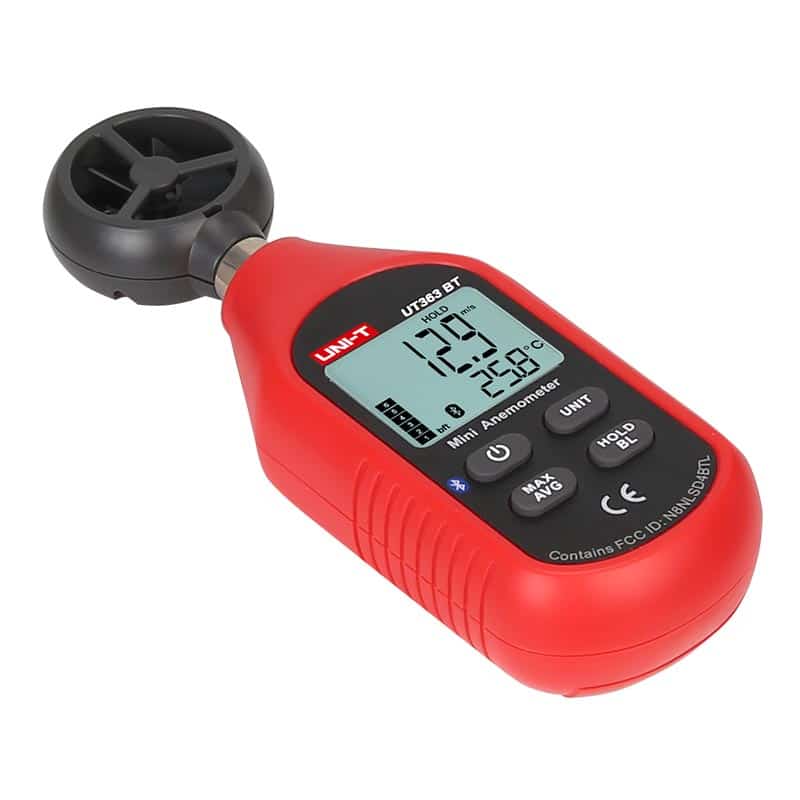Expert Tips for Calibrating Your Anemometer for Optimum Performance
Expert Tips for Calibrating Your Anemometer for Optimum Performance
Blog Article
Anemometers Introduced: Understanding Their Value in Environmental Tracking and Precaution
The duty of anemometers in ecological monitoring and precaution is typically undervalued, yet their significance is indisputable. These tools have a lengthy background rooted in clinical query and technological developments, progressing to become crucial tools in different fields. From weather forecasting to aeronautics safety and security, anemometers play an important duty in supplying accurate information that informs decision-making procedures and boosts general safety. Understanding the ins and outs of anemometers reveals a world of important understandings that are basic to our understanding of the atmosphere and the measures we take to ensure safety.
History of Anemometers
The evolution of anemometers can be mapped back to the ancient people where basic wind gauging gadgets were first used. One of the earliest known anemometers was the hemispherical mug anemometer developed by Leon Battista Alberti in the 15th century.
In the 18th century, the prominent scientist John Thomas Romney Robinson presented the Robinson anemometer, which featured 4 hemispherical cups installed on horizontal arms that prolonged from a central axis. This layout came to be a criterion in meteorological dimensions as a result of its accuracy and integrity. Over the years, innovations in technology caused the advancement of more modern-day anemometers, including ultrasonic anemometers and laser Doppler anemometers, offering enhanced accuracy and efficiency in determining wind speed and direction. The history of anemometers showcases an amazing trip of advancement and progress in the area of weather forecasting.
Kinds of Anemometers
Throughout the field of meteorology, numerous kinds of anemometers have actually been created to accurately gauge wind rate and instructions. One of the most usual type is the cup anemometer, which contains 3 or 4 mugs placed on straight arms that revolve with the wind. As the cups spin, the speed at which they rotate is straight proportional to the wind speed. One more widely utilized type is the vane anemometer, which features a tail or fin that aligns itself with the wind instructions. This alignment enables the device to establish the wind direction. Sonic anemometers use ultrasonic signals to measure wind rate and direction precisely. They are commonly used in research applications because of their high precision. Hot-wire anemometers run based upon the principle that the cooling result of wind on a warmed cord is symmetrical to the wind speed. These anemometers are appropriate for gauging low wind speeds with high precision. Each sort of anemometer has its staminas and is picked based on the details demands of the surveillance task available.
Applications in Weather Forecasting
Having actually talked about the different kinds of anemometers made use of in meteorology for determining wind speed and direction, it is important to discover their useful applications in the area. Anemometers play a vital role in weather forecasting by providing precise and real-time information on wind problems (anemometer). Meteorologists use anemometers to keep track of wind speed and direction to anticipate weather patterns, concern cautions for severe climate events like hurricanes, cyclones, and storms, and evaluate atmospheric problems for aviation safety
In meteorology, anemometers assist in understanding regional and neighborhood wind patterns, which are crucial for anticipating climate changes and determining weather trends. These gadgets are likewise used in study to examine microclimates, urban heat islands, and air pollution diffusion. Furthermore, anemometers are utilized in farming to optimize plant monitoring practices, such as watering and chemical application, based upon wind conditions.
Value in Aeronautics Safety And Security
An essential facet of guaranteeing air travel safety depends on the careful surveillance of wind conditions utilizing anemometers. Anemometers play a critical function in aviation by offering real-time information on wind speed and instructions, assisting pilots in making educated decisions during take-off, touchdown, and flight. Unpredictable and solid winds can significantly affect aircraft operations, making it crucial for aeronautics authorities to depend on exact wind measurements to make sure the security of travelers and team.

In the vibrant environment of aeronautics, where also small modifications in wind speed and instructions can have profound effects, anemometers stand as indispensable devices for promoting protected and secure flight.
Function in Environmental Research
How do anemometers add to advancements in ecological research? Anemometers play a critical function in ecological research study by supplying crucial information on wind speed and direction. This information is essential for recognizing different climatic processes, such as air contamination view it now diffusion, climate patterns, and climate adjustment. By precisely gauging wind qualities, anemometers help scientists evaluate the motion of pollutants in the air, examine the impact of commercial emissions, and anticipate the spread of pollutants in the atmosphere.


Verdict
In verdict, anemometers have played a crucial duty in environmental surveillance and safety and security measures. Comprehending the importance of anemometers is crucial for precisely measuring wind speed and instructions, which is crucial for forecasting weather patterns, making certain secure aeronautics procedures, and performing environmental studies.
One of the earliest recognized anemometers was the hemispherical cup anemometer created by Leon Battista Alberti in the 15th century. Over the years, developments in technology led to the development of more modern anemometers, including ultrasonic anemometers and laser Doppler anemometers, supplying enhanced accuracy and efficiency in measuring wind rate and instructions. Hot-wire anemometers run based try this site on the principle that the cooling effect of wind on a warmed cable is proportional to the wind speed. Meteorologists make use of anemometers to keep an eye on wind speed and instructions to forecast climate patterns, concern cautions for extreme climate occasions like hurricanes, storms, and hurricanes, and evaluate atmospheric conditions for aviation safety.
Understanding the value of anemometers is necessary for accurately gauging wind speed and instructions, which is vital for forecasting climate patterns, guaranteeing risk-free aviation operations, and conducting environmental researches. (anemometer)
Report this page